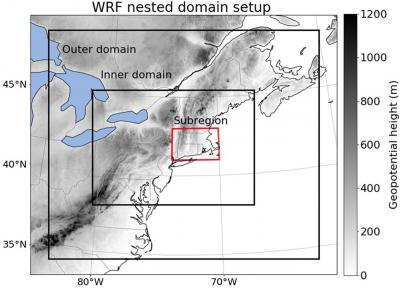Retrospective and Prospective Examinations of the 1960s U.S. Northeast Drought
As the most severe drought over the Northeastern United States (NEUS) in the past century, the 1960s drought had pronounced socioeconomic impacts. Risks remain for the conditions driving the 1960s drought to potentially return in the future. With climate change potentially exacerbating its impacts, there is likely to be significant challenges for water management. This study projects the hydrometeorological conditions and potential risks of returned 1960s drought under a warming climate. In contrast to the historical 1960s drought, future droughts are generally wetter, with increased soil moisture and evapotranspiration, and reduced snowpack. Challenges emerge such as more extreme hot days, record-low snowpack, frozen ground degradation, and subsequent decreases in surface runoff.
Although the cold temperatures of the 1960s NEUS drought did mitigate its impacts, under a changing climate there is a risk of much warmer temperatures exacerbating these impacts. To better understand the impacts from a reoccurrence of the 1960s drought, we study a scenario in which the weather patterns of this period return in the context of a warmer future environment. The pseudo-global warming method is used so that we can directly estimate differences between current and future climatological conditions. This study provides atmospheric forcing data which can be used in further hydrology or soil research.
To project the potential consequences of such a future drought, pseudo-global warming simulations using the Weather Research and Forecasting Model are performed to simulate the dynamical conditions of the historical 1960s drought, but with modified thermodynamic conditions under the shared socioeconomic pathway SSP585 scenario in the early (2021-2027), middle (2041-2047) and late (2091-2097) 21st century. Our analysis focuses on essential hydroclimatic variables including temperature, precipitation, evapotranspiration, soil moisture, snowpack, and surface runoff. In contrast to the historical 1960s drought, similar dynamical conditions will generally produce more precipitation, increased soil moisture and evapotranspiration, and reduced snowpack. However, we also find that although wet months get much wetter, dry months may become drier, meaning that wetting trends are most significant in wet months but are essentially negligible for extremely dry months with negative monthly mean net precipitation. Other challenges emerge for residents and stakeholders in this region, including more extreme hot days, record-low snowpack, frozen ground degradation, and subsequent decreases in surface runoff. Simulations are performed at The National Energy Research Scientific Computing Center, supported by the Department of Energy Office of Science.

